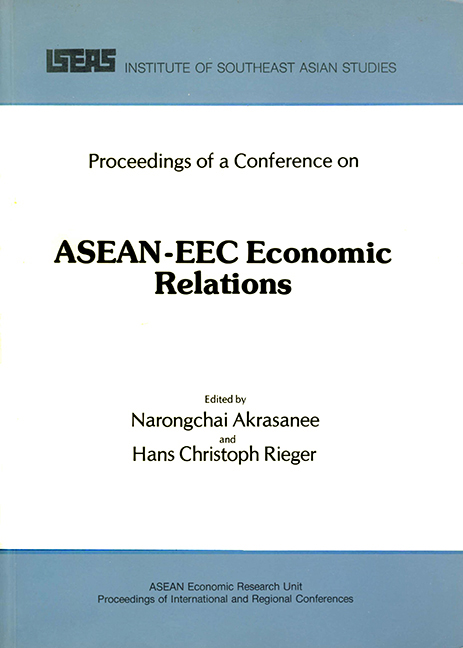EC Investment in ASEAN
from II - INVESTMENT
Published online by Cambridge University Press: 21 October 2015
Summary
With the exception of Thailand, the ASEAN countries were previously under the control of European or American colonial powers and this, inter alia, led to the rapid opening up of these countries to international trade and investment. In spite of political independence, Thailand underwent similar colonial type economic development. The dominant type of foreign investment in colonial times was in plantations and mineral development for the export market. There were also investments in physical infrastructure, commerce and finance, but little in manufacturing.
During the 1950s and early 1960s the ASEAN countries became committed to transforming their large alien-dominated economies into national entities, with greater national ownership and control of both the traditional and the nascent modern sectors, and to ensuring that the fruits of economic development led to social development and rising standards of living of their people. Although the ASEAN countries (excepting Singapore) were well endowed with natural resources, the emphasis was on industrialization. There was a perceived need for private direct foreign investment for an industrial take-off and to keep foreigners away from the ownership and control of national natural resources. During this import substitution phase, foreign investments, especially from non-traditional sources, flowed into Indonesia, Malaysia, Philippines and Thailand to produce consumer manufactures for the domestic market. In the current export oriented phase, pursued most vigorously by Singapore and least by Indonesia, foreign investors produce labour intensive manufactures for the export market. The resource development motive is more prevalent among foreign investors in Indonesia, while the low-cost export base motive is more dominant among investors in Singapore. The other three ASEAN countries have a mix of all types of investments.
The following section outlines the foreign investment policies of the ASEAN countries, while the next surveys the motives of foreign investors in ASEAN and the overall pattern of foreign investment in the region. EC investments in ASEAN are then examined, while the conclusion highlights some of the issues pertaining to foreign investments in the region.
- Type
- Chapter
- Information
- ASEAN-EEC Economic Relations , pp. 256 - 313Publisher: ISEAS–Yusof Ishak InstitutePrint publication year: 1981



